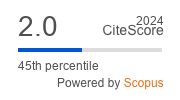Prototyping in practice – Paths and partners for testing novel industrial product and service ideas
DOI:
https://doi.org/10.23726/cij.2023.1479Keywords:
Prototyping, Collaboration, idea advancementAbstract
Prototyping is a core activity in developing new products, processes, and organisations alike. This paper describes the prototyping activities of 31 engineering design professionals in a high-technology industrial company, examining the distribution of different types of activities across different phases of development based on thematic interviews. Examining 62 prototyping and testing pathways, we found that most prototyping paths started with the practitioners’ own activities, which was also more likely to lead to paths with more prototyping steps than if the first prototyping activity took place with a stakeholder. Overall, the paths were short, indicating a lack of iteration. Both internal and external stakeholders were involved in collaborative prototyping. This collaboration was enabled by personal and unit level relationships, and different stakeholders were involved in different phases of development. Taken together, our results suggest that practitioner attention in prototyping may focus on latter development phases and demonstrate less iteration than what literature might suggest, with opportunities for prototyping highly dependent on personal networks in the high-technology context in the absence of flexible prototyping budgets.
References
Amabile, T. M., 1988, A model of creativity and innovation in organizations. In B. M. Staw & L. L. Cumming (Eds.), Research in organizational behavior, 10 (pp. 123–167). Greenwich, CT: JAI Press.
BenMahmoud‐Jouini, S., & Midler, C., 2020, Unpacking the notion of prototype archetypes in the early phase of an innovation process. Creativity and Innovation Management, 29(1), 49-71.
Bogers, M., & Horst, W., 2014), Collaborative prototyping: Cross‐fertilization of knowledge in prototype‐driven problem solving. Journal of Product Innovation Management, 31(4), 744-764.
Camburn, B., Viswanathan, V., Linsey, J., Anderson, D., Jensen, D., Crawford, R., ... & Wood, K., 2017, Design prototyping methods: state of the art in strategies, techniques, and guidelines. Design Science, 3, e13.
Chell, E., 1998, “Critical Incident Technique.” In Qualitative Methods and Analysis in Organizational Research: A Practical Guide, 51–72. Thousand Oaks, CA: Sage Publications Ltd.
Flanagan, J. C., 1954, “The Critical Incident Technique.” Psychological Bulletin 51 (4): 327–58. https://doi.org/10.1037/h0061470.
Houde, S., & Hill, C., 1997, What do prototypes prototype?. In Handbook of human-computer interaction (pp. 367-381). North-Holland.
Ibarra, H. ,1993, Network centrality, power, and innovation involvement: Determinants of technical and administrative roles. Academy of Management journal, 36(3), 471-501.
Kirjavainen, S., & Hölttä-Otto, K., 2021, Deconstruction of idea generation methods into a framework of creativity mechanisms. Journal of Mechanical Design, 143(3), 031401.
Laakso, M., & Liikkanen, L. A., 2012, Dubious role of formal creativity techniques in professional design. In DS 73-1 Proceedings of the 2nd International Conference on Design Creativity Volume 1 (pp. 55-64).
Lim, Y. K., Stolterman, E., & Tenenberg, J., 2008, The anatomy of prototypes: Prototypes as filters, prototypes as manifestations of design ideas. ACM Transactions on Computer-Human Interaction (TOCHI), 15(2), 1-27.
Micheli, P., Wilner, S. J., Bhatti, S. H., Mura, M., & Beverland, M. B., 2019, Doing design thinking: Conceptual review, synthesis, and research agenda. Journal of Product Innovation Management, 36(2), 124-148.
Nelson, J., & Menold, J., 2020, August, The Value of Prototyping: An Investigation of the Relationship Between the Costs of Prototyping, Perceived Value, and Design Outcome. In International Design Engineering Technical Conferences and Computers and Information in Engineering Conference (Vol. 83976, p. V008T08A041). American Society of Mechanical Engineers.
Paton, B., & Dorst, K., 2011, Briefing and reframing: A situated practice. Design studies, 32(6), 573-587.
Rekonen, S., & Hassi, L., 2018, Impediments for experimentation in novice design teams. International Journal of Design Creativity and Innovation, 6(3-4), 235-255.
Sanders, E. B.-N., E. Brandt, and T. Binder., 2010, “A Framework for Organizing the Tools and Techniques of Participatory Design.” Proceedings of the Participatory Design Conference 2010, Sydney, Australia.
Yu, F., Pasinelli, M., & Brem, A., 2018, Prototyping in theory and in practice: A study of the similarities and differences between engineers and designers. Creativity and Innovation Management, 27(2), 121-132.
Downloads
Published
How to Cite
Issue
Section
Categories
License
Copyright (c) 2023 Senni Kirjavainen, Simo Lahdenne, Tua A. Björklund

This work is licensed under a Creative Commons Attribution 4.0 International License.
Authors who publish with this journal agree to the following terms:
- Authors retain copyright and grant the journal right of first publication with the work simultaneously licensed under a Creative Commons Attribution License that allows others to share the work with an acknowledgement of the work's authorship and initial publication in this journal.
- Authors are able to enter into separate, additional contractual arrangements for the non-exclusive distribution of the journal's published version of the work (e.g., post it to an institutional repository or publish it in a book), with an acknowledgement of its initial publication in this journal.
- Authors are permitted and encouraged to post their work online (e.g., in institutional repositories or on their website) prior to and during the submission process, as it can lead to productive exchanges, as well as earlier and greater citation of published work (See The Effect of Open Access).


